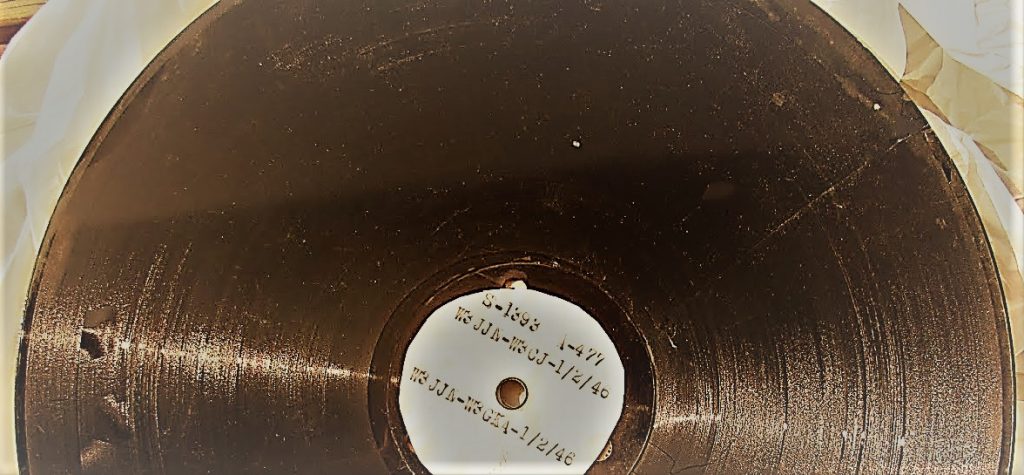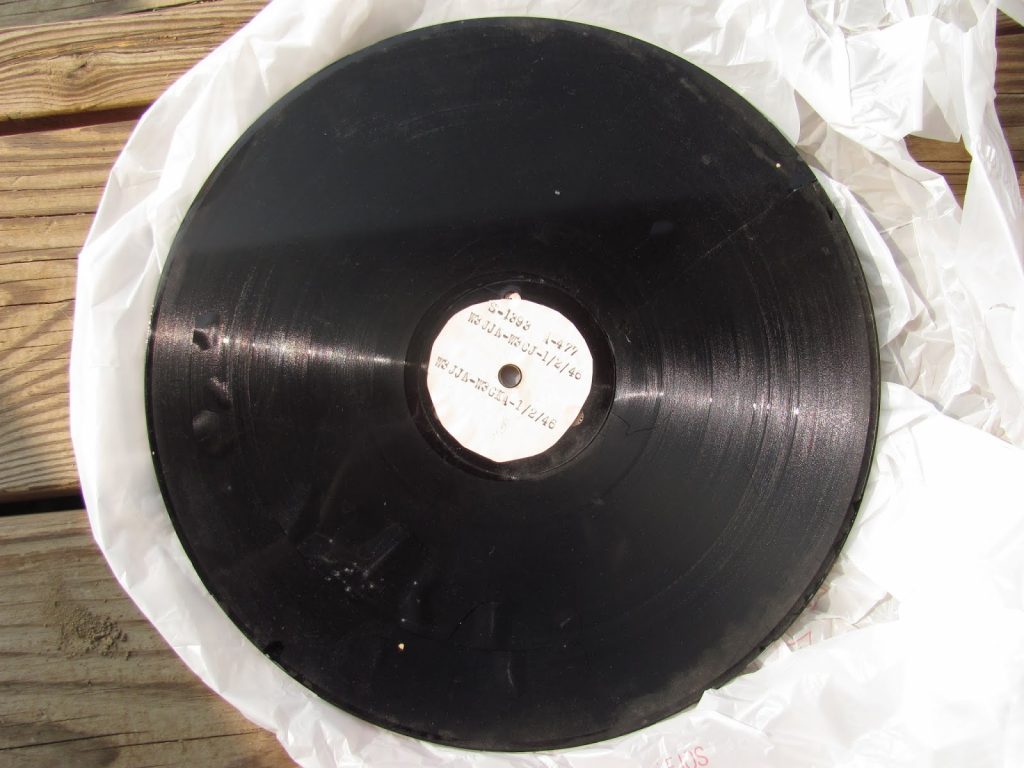At the Winter SWL Fest last week, my friend, Andrew Yoder (author of the Pirate Radio Annual) told me about a recent find: homemade records by amateur radio operator W3JJN.
Andrew wrote about these recordings on his blog:
[…]Before open-reel decks were wire recorders. Information was magnetized onto a fine reel of stainless steel wire. It was essentially the same concept as tape decks, whether open reel or cassette, only the tape system was a refinement (an oxide coating on a plastic tape), rather than trying to magnetize a wire.
[…]Before wire recorders were record recorders. These took an audio source and the needle cut a blank disc with grooves. From what I understand, these homemade discs weren’t meant to be played back too many times because the needles wore into the grooves more quickly than commercially manufactured records. I’m not sure what they were all made from, but I know that some were aluminum discs with a thin layer of plastic.
I always look for the homemade records because there weren’t too many options for audio sources back then. By the open-reel tape era, a lot of people were recording entire albums to tape, so they weren’t necessarily recording the radio. But, for example, in 1940, the options were basically either family greetings, someone singing or a band playing, or the radio. And chances are good that any recording you find is the only one in existence.
I found three of these on Saturday.
Here’s a photo of one.
They are amateur radio QSOs from W3JJN to a couple of other operators. W3JJN cataloged the discs by side . . . and this was number 477. So, at least 237 other records existed in his homemade record collection at one time. The sides that I have are dated in late 1945 and early 1946. To me, this is an astounding find because I’m not sure how many recordings exist of any amateur radio operations prior to 1950, not to mention that this is still very early in the post-war period.
I did some searching on W3JJN and he was William E. Belz, who lived at that time on 1509 Linden Avenue in Baltimore, Maryland. He was a TV repairman who was born in Duncansville, PA, and died in 1981 after a lengthy illness.
My big problem here is that these records are disintegrating. The plastic layer is cracking badly and separating from the aluminum discs. I guess what I really need is one of the laser turntables that can play back audio from broken discs and won’t damage the grooves. I don’t think I can risk playing any of these on a regular turntable, but I want to recover the audio quickly before the discs degrade further.
Post readers: Any advice on preserving these recordings? It sounds like using an actual needle to make a digital copy might be a little too destructive. Are there alternatives? Please comment if you have any experience or suggestions!


